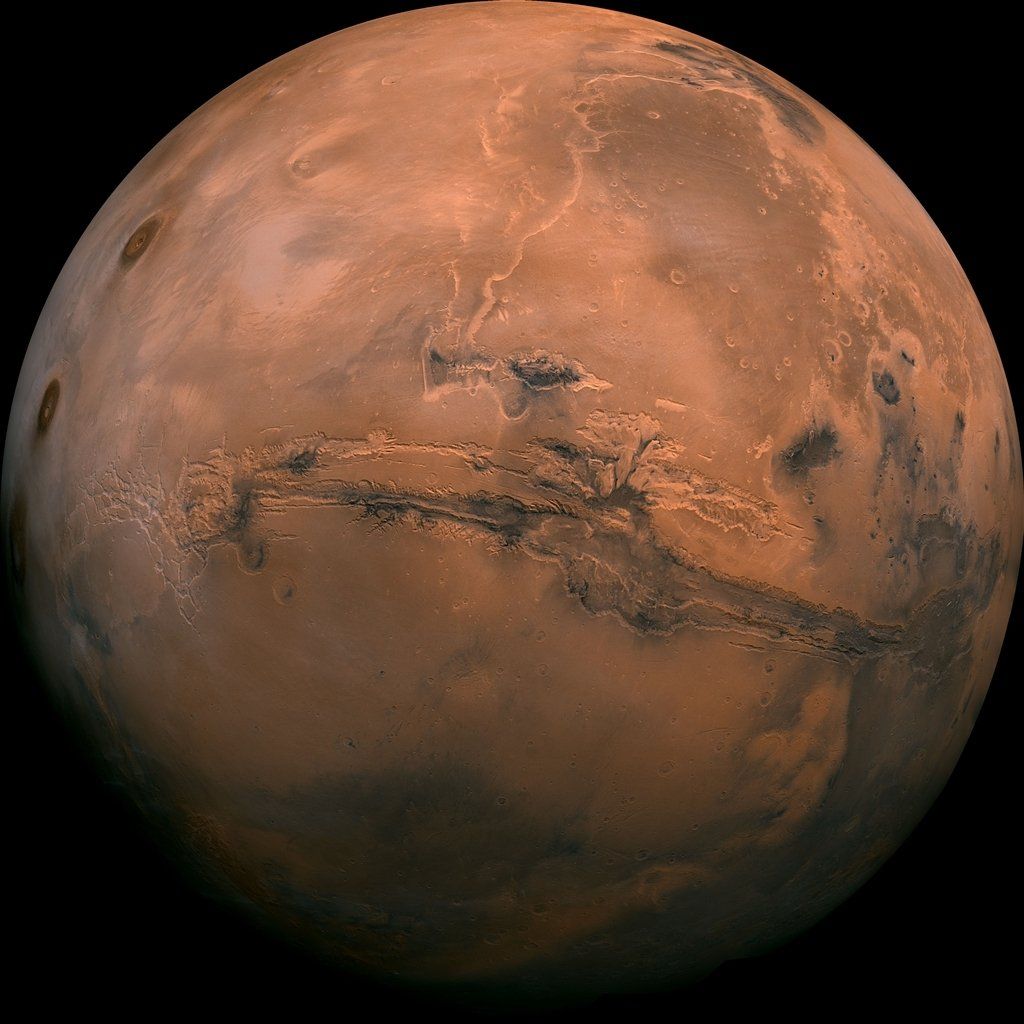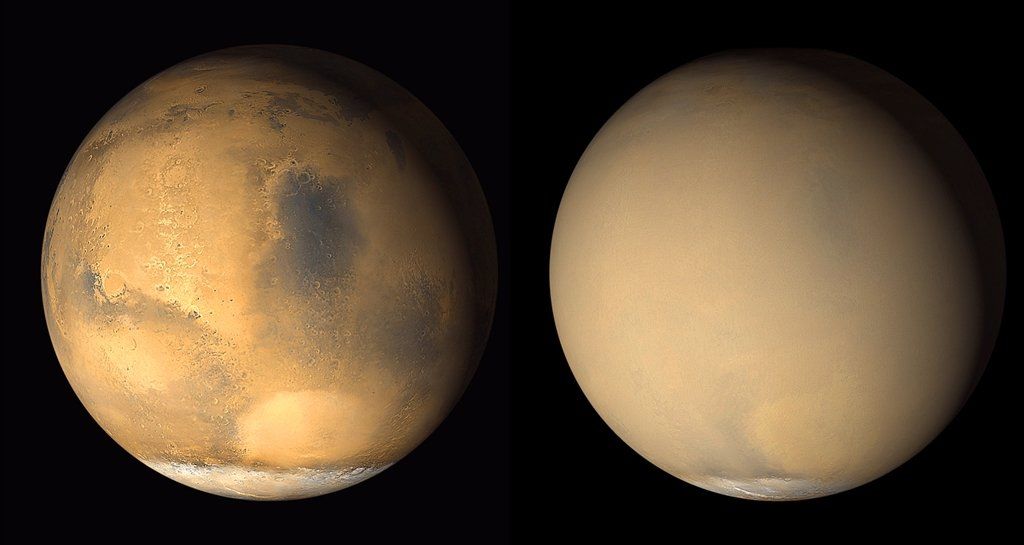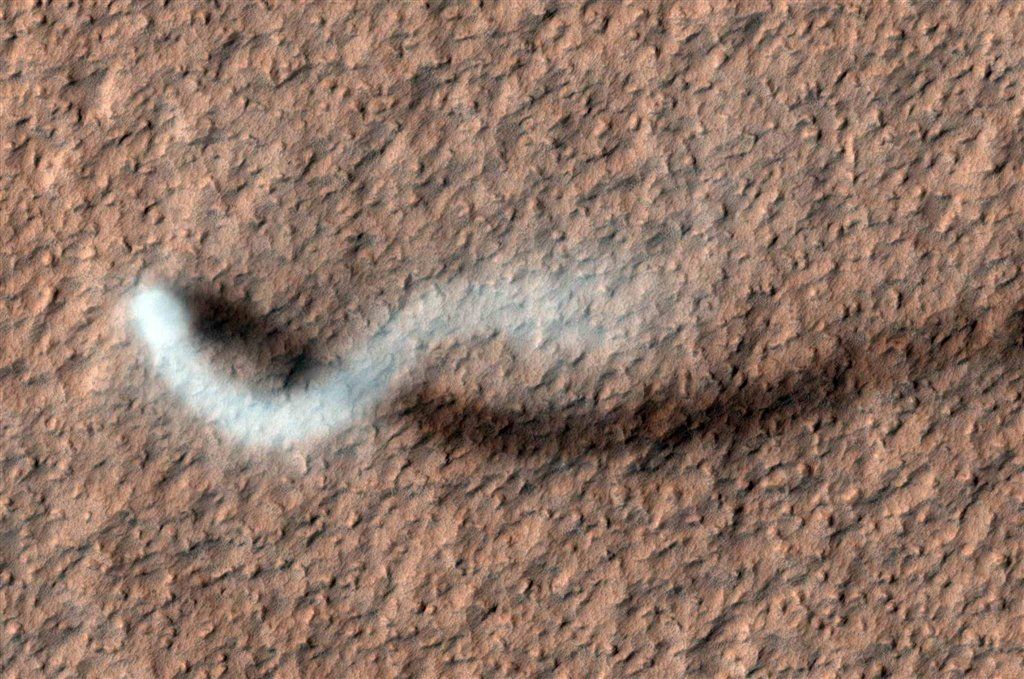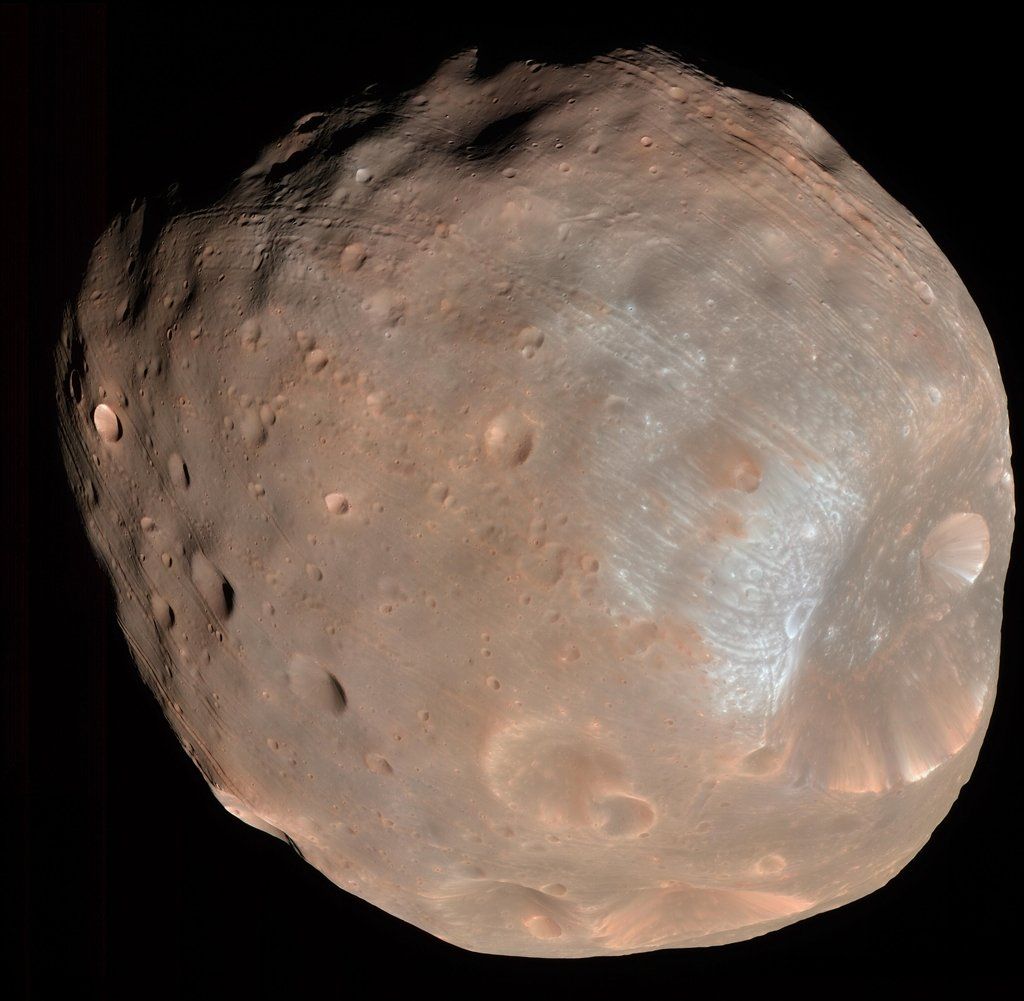This web page is created within BALTICS project funded from the European Union’s Horizon2020 Research and Innovation Programme under grant agreement No.692257.
Mars and its moons
The fourth planet from the Sun is Mars, named after the ancient Roman god of war. It is often referred to as the “Red Planet” because, when viewed with the naked eye and through a telescope, Mars is characterized by a reddish tinge caused by the iron oxide common on the surface.
The orbit of Mars is an average of 230 million kilometers from the Sun. One year on the planet lasts 687 Earth days. On the other hand, the day on Mars is only slightly longer than on Earth - 24 hours, 39 minutes and 35 seconds.
Since the tilt of Mars axis of rotation with respect to the ecliptic plane is about 25 degrees, the planet has seasons with marked temperature fluctuations. In the Polar Regions, temperatures in winter reach as high as -145 degrees Celsius (/C); while in the vicinity of the equator it can be very warm in summer (35/C). The average temperature on the surface of Mars is -60 / C.
Mars, like Earth, is a layered object. Its core consists of iron, nickel and sulfur. In the beginning, the core of Mars was liquid and its layers rotated, creating a global magnetic field. Nowadays, it is considered to be solid and immobile. The nucleus is surrounded by a frozen mantle in which tectonic activity is no longer observed. Above it is a crust about 50 kilometers thick.
The magnetic field of Mars is about 40 times weaker than Earth’s. It is asymmetric – the magnetic field is practically invisible in the northern hemisphere, but stronger in the southern hemisphere. It is still unclear how such a globally heterogeneous magnetosphere has developed. Research shows that the global magnetic field ceased to exist when Mars was about 500 million years old.
The atmosphere on Mars consists mostly of carbon dioxide and is much thinner than on Earth. The solar wind interacts with the upper layers of the Red Planet’s atmosphere in the northern hemisphere, where they are practically not protected by a magnetic field, and intensively blows away the gas molecules.
Like on Earth, the day-night ratio of Mars depends on the season. As summer approaches, the days get longer and the Sun warms the surface of Mars longer. Both water ice and carbon dioxide ice sublime or immediately change from a solid state to a gaseous state. It is possible that water with a high concentration of salts on Mars may temporarily exist in a liquid state. As the temperature drops, melted water and carbon dioxide precipitate in the form of ice, frost and snow.
Although the atmospheric pressure on Mars is about 0.6% of the atmospheric pressure on Earth at sea level, it is sufficient to ensure the presence of wind. Unlike the hurricanes on Mars portrayed in science fiction movies, which can pull even humans off the surface, the wind on Mars is incomparably weaker than what we can experience on Earth, even during a storm. However, it can lift up grains of dust that are smaller on Mars than on Earth, creating not only small tornadoes and local dust clouds, but even months of dust storms surrounding the entire planet.
Clouds are also visible on Mars, but they are rare and, when looking at Mars through a telescope, do not interfere with the exploration of its surface objects. Exploration of the Red Planet with the help of telescopes has been going on for centuries and continues today. As the quality and resolution of telescopes improved, scientists were able to see more and more details.
One of the most interesting milestones in the study of Mars took place in 1877, when the Italian astronomer Giovanni Schiaparelli looked at the Red Planet with a 22 cm telescope and drew the first detailed map of Mars. It showed straight lines, which Schiaparelli considered to be natural watercourses and named after the famous rivers of the Earth. When translating Schiaparelli’s works into English, the Italian word ‘canali’ was translated as ‘canals’, which are artificial watercourses. This suggested that there were intelligent life forms on Mars that had created these canals.
However, the first missions in which spacecraft flew past Mars revealed that nowadays Mars is a dry, desert-like planet. Further research, both with orbiting devices and with laboratories operating on the surface of Mars, has found evidence that in ancient times, billions of years ago, the planet’s atmosphere was dense enough to allow the presence of liquid water on the surface. This is evidenced by the formations found on the surface – river beds, rock layers, and chemical compounds that are formed in the presence of water.
On Mars, which is about 6,800 km in diameter, the highest volcano in the solar system is Olympus Mon, which is about 22 km high. The Red Planet also has one of the most impressive canyon systems in the solar system – Valles Marineris, which is about 4,000 km long and in some places even 7 km deep.
Because the atmosphere of Mars is quite thin, asteroids reach the surface much more often, leaving craters of different sizes behind. The proximity of Mars to the asteroid belt is also likely to be the reason why the planet experiences collisions more often. A larger number of craters are found in the southern hemisphere. Off-road vehicles exploring the surface of Mars have discovered several meteorites.
The proximity of the asteroid belt could have helped Mars acquire its two moons, Phobos and Deimos, 22 and 12 km in diameter, respectively. Phobos orbit is about 9 km, Deimos – 24 km from Mars. Phobos is approaching the planet and it is predicted that after about 30 to 50 million years, the gravity of Mars will tear it to pieces.

























